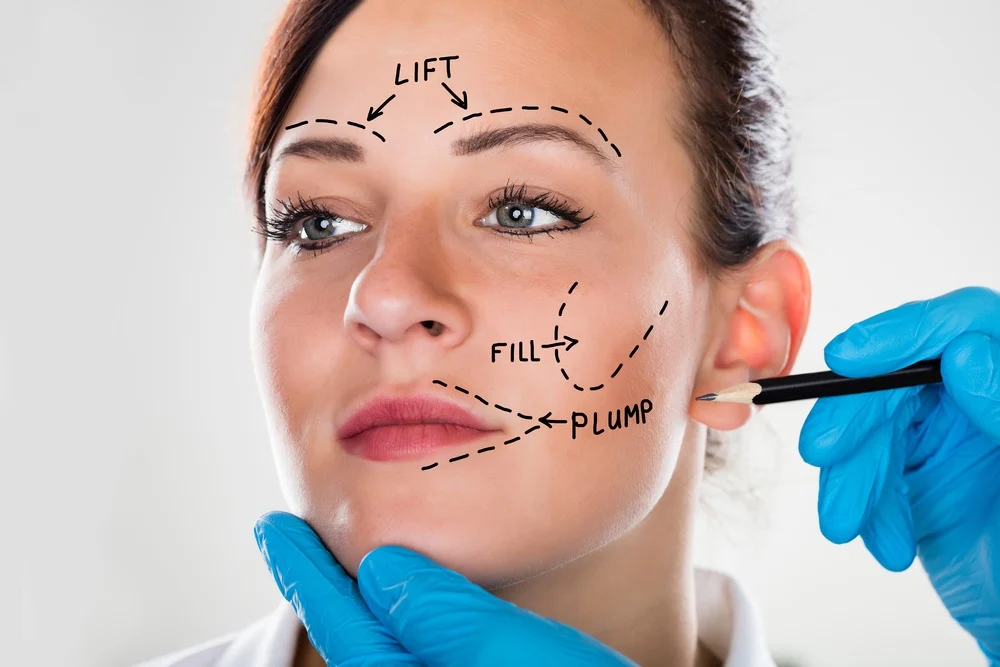A face lift, or rhytidectomy, is a surgical procedure aimed at reducing the visible signs of aging in the face and neck. The procedure can address issues such as sagging skin, deep creases around the nose and mouth, loose skin and fat under the chin and jaw, and a tired or aged facial appearance. This comprehensive article explores the intricacies of face lift surgery, including the procedure itself, the types of face lifts available, the pre-operative preparations, the recovery process, and potential risks and complications.
History and Evolution of Face Lift Surgery
Face lift surgery has a storied history dating back to the early 20th century. The first face lift was performed in 1901 by Eugen Holländer, a German surgeon, who removed skin from a Polish aristocrat’s face. Over the decades, techniques have evolved significantly. In the 1970s, the introduction of the superficial musculoaponeurotic system (SMAS) technique allowed for more natural-looking results. Advances in technology and surgical methods have further refined the procedure, minimizing risks and improving outcomes.
Types of Face Lift Surgery
Face lift surgery is not a one-size-fits-all procedure. Various techniques are employed depending on the patient’s needs and desired outcomes:
- Traditional Face Lift: This comprehensive procedure involves incisions around the hairline, temples, and behind the ears. It addresses sagging skin, deep creases, and excess fat, providing dramatic results.
- Mini Face Lift: A less invasive option, the mini face lift involves smaller incisions and is suitable for patients with mild to moderate skin laxity. It’s often referred to as a “weekend face lift” due to its shorter recovery time.
- Mid-Face Lift: This procedure focuses on the middle part of the face, addressing sagging cheeks and nasolabial folds. Incisions are typically made along the hairline and inside the mouth.
- Lower Face Lift: Targeting the lower third of the face, this surgery addresses jowls, sagging jawlines, and loose neck skin.
- Thread Lift: A non-surgical option, thread lifts use dissolvable sutures to lift and tighten the skin. While the results are less dramatic, the procedure has minimal downtime.
Preparing for Face Lift Surgery
Preparation is key to a successful face lift surgery. Patients typically undergo a thorough consultation with a board-certified plastic surgeon who evaluates their medical history, facial structure, and aesthetic goals. Here are some common steps in the preparation process:
- Medical Evaluation: A comprehensive health assessment to ensure the patient is fit for surgery. This includes blood tests, physical exams, and reviewing any current medications.
- Discussing Expectations: Clear communication about desired outcomes and realistic expectations is crucial. Surgeons often use before-and-after photos to illustrate potential results.
- Lifestyle Adjustments: Patients may be advised to quit smoking, avoid certain medications, and maintain a healthy diet to optimize healing.
- Planning for Recovery: Arrangements for post-operative care, including someone to drive the patient home and assist with daily activities during the initial recovery period, should be made in advance.
The Face Lift Procedure
The specifics of the face lift procedure vary based on the type of face lift being performed. However, the general steps are as follows:
- Anesthesia: Patients are typically given general anesthesia or local anesthesia with sedation to ensure comfort during the procedure.
- Incisions: The surgeon makes incisions in predetermined locations. In a traditional face lift, incisions are made around the hairline, extending around the ears and into the lower scalp.
- Reshaping and Lifting: The surgeon repositions and tightens the underlying tissues and muscles. Excess skin is trimmed away, and fat may be sculpted or redistributed.
- Closing Incisions: Incisions are meticulously closed with sutures or skin adhesives to minimize scarring. Drains may be placed to prevent fluid accumulation.
- Bandaging: The face is bandaged to reduce swelling and support the new contours.
Post-Operative Care and Recovery
Recovery from face lift surgery is a gradual process that requires patience and adherence to post-operative instructions. Here is a detailed timeline and tips for recovery:
- Immediate Post-Operative Period (Day 1-3):
- Monitoring: Patients are closely monitored for any complications such as excessive bleeding or adverse reactions to anesthesia.
- Pain Management: Pain and discomfort are common, and prescribed pain medications can help manage these symptoms.
- Rest: Rest is crucial. Keeping the head elevated helps reduce swelling.
- First Week:
- Swelling and Bruising: Swelling and bruising peak during the first few days but gradually subside. Cold compresses can help alleviate these symptoms.
- Follow-Up Appointment: A follow-up visit is scheduled to check on the healing process, remove drains if present, and address any concerns.
- Weeks 2-4:
- Suture Removal: Sutures are typically removed within the first two weeks.
- Resuming Activities: Light activities can be resumed, but strenuous activities and heavy lifting should be avoided.
- Months 1-3:
- Continued Healing: Swelling continues to decrease, and the final results begin to emerge.
- Scar Care: Applying silicone gel or scar creams as recommended by the surgeon can help minimize scarring.
- Long-Term Care:
- Sun Protection: Protecting the skin from sun exposure is crucial to prevent pigmentation changes and protect healing skin.
- Healthy Lifestyle: Maintaining a healthy lifestyle, including a balanced diet and not smoking, helps prolong the results.
Potential Risks and Complications
While face lift surgery is generally safe, it carries potential risks and complications, as with any surgical procedure:
- Hematoma: A collection of blood under the skin can cause swelling and pressure. This may require additional surgery to drain.
- Infection: Infections are rare but can occur. Antibiotics and proper wound care can mitigate this risk.
- Scarring: Although surgeons strive to place incisions discreetly, some scarring is inevitable. Proper care and treatments can minimize visible scars.
- Nerve Injury: Temporary or permanent nerve damage can affect facial movement and sensation.
- Anesthesia Risks: Complications related to anesthesia, such as allergic reactions or respiratory issues, can occur.
- Hair Loss: Incisions around the hairline can cause temporary or permanent hair loss.
Choosing the Right Surgeon
Selecting a qualified, board-certified plastic surgeon is crucial for a successful face lift. Consider the following factors:
- Credentials: Verify the surgeon’s board certification, training, and experience in face lift surgery.
- Portfolio: Review before-and-after photos of previous patients to assess the surgeon’s work.
- Reviews and Testimonials: Patient reviews and testimonials provide insights into the surgeon’s reputation and patient satisfaction.
- Consultation: A thorough consultation allows you to discuss your goals, ask questions, and evaluate the surgeon’s approach.
Advances in Face Lift Surgery
Technological and methodological advances continue to enhance face lift surgery, making it safer and more effective:
- Endoscopic Techniques: Endoscopic face lifts use smaller incisions and a camera to guide the surgeon, resulting in less scarring and a quicker recovery.
- Fat Grafting: Transferring fat from other parts of the body to the face can restore volume and create a more youthful appearance.
- Laser and Radiofrequency Treatments: These non-invasive treatments can complement surgical results by tightening the skin and improving texture.
- Stem Cell Face Lifts: An emerging technique, stem cell face lifts use the patient’s own stem cells to rejuvenate the skin and promote healing.
Psychological and Social Aspects
Undergoing face lift surgery can have significant psychological and social impacts:
- Self-Esteem: Many patients experience a boost in self-esteem and confidence following the procedure, feeling more comfortable and satisfied with their appearance.
- Social Interactions: Improved self-confidence can enhance social interactions and relationships.
- Emotional Adjustment: The recovery period can be emotionally challenging. Support from family and friends, along with realistic expectations, can help manage this transition.
- Body Dysmorphic Disorder (BDD): Patients with BDD may have unrealistic expectations and dissatisfaction with their appearance. It’s crucial to identify and address BDD before undergoing cosmetic surgery.
Conclusion
Face lift surgery is a transformative procedure that can rejuvenate the face and restore a youthful appearance. Understanding the various types of face lifts, the preparation involved, the surgical process, and the recovery timeline is essential for anyone considering this procedure. By choosing a qualified surgeon and adhering to post-operative care instructions, patients can achieve satisfying and long-lasting results. As with any surgery, it’s important to weigh the potential risks and benefits and make an informed decision that aligns with personal aesthetic goals and overall health.







